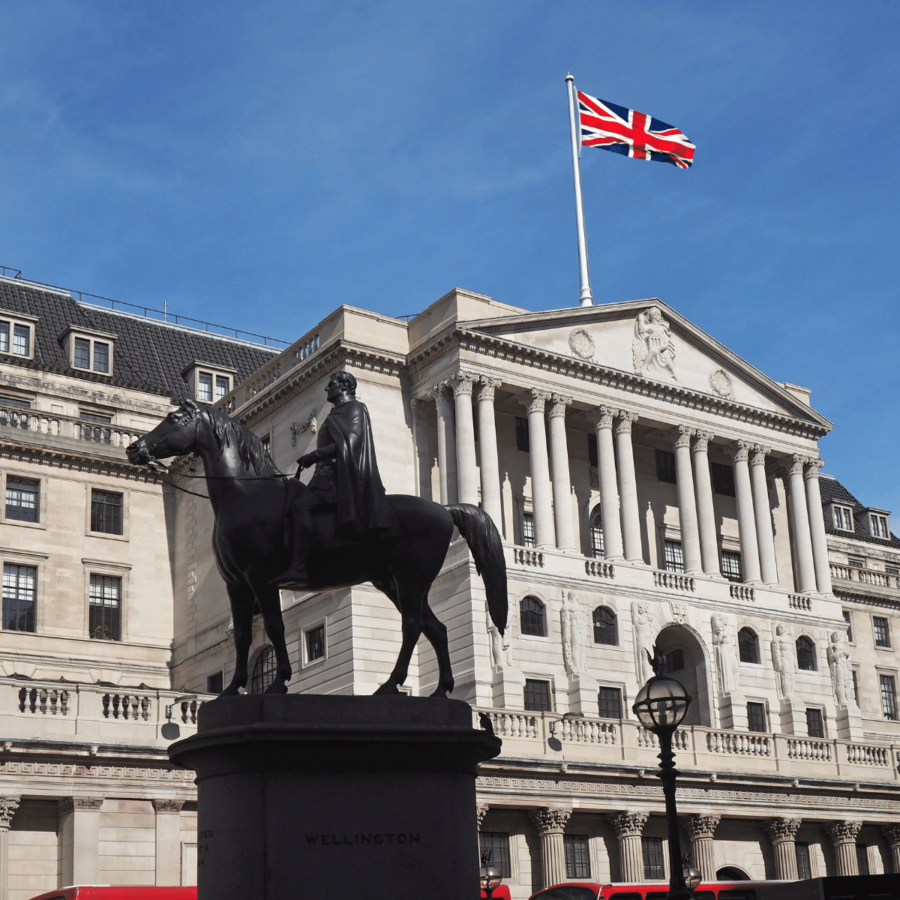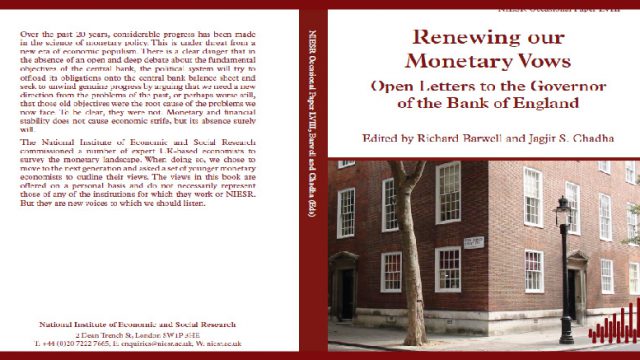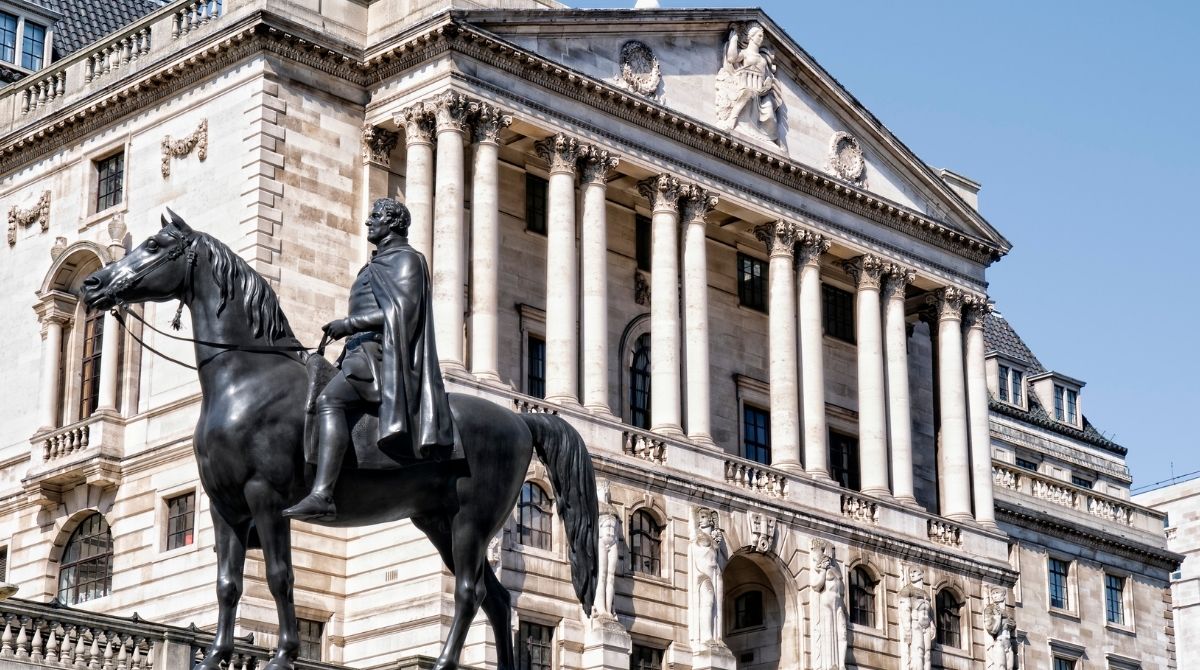An Open Letter to Andrew Bailey
Where is current policy at the Bank of England heading? In an open letter, NIESR warns Governor Andrew Bailey that if you do not manage the markets, they will manage you.

Andrew Bailey
Governor
Bank of England
Threadneedle Street
London, EC2R 8AH
Dear Governor
No-one can say that the three years and three months since you became Governor have been easy ones for the economy. We have had a global pandemic, supply chain disruptions, a war on the continent of Europe and all in the shadow of a botched Brexit that has amplified the impact of these shocks. Over this period, fiscal policy has been directed at providing a cushion to households and firms, and accordingly has ratcheted up the level of public debt with monetary policy providing fiscal space. You should not be criticised for seeking to support economic activity in this extraordinary period.
But it looks increasingly as though this monetary-fiscal programme set up a cauldron in which huge food and energy shocks bubbled away. And even though for most of this century we puzzled about a flat Phillips curve, we have, as a result, finally located the steep part. Inflation has reached double digits for the first time in 40 years, and core inflation is surprising in a serially correlated manner on the upside. This has led to an avalanche of criticism and an escalation in financial market expectations of bank rate, in line with those we thought incredible at the time of the mini-budget. The question the Bank of England faces at this point is: quo vadis?
A book of open letters published in autumn 2019 by the National Institute of Economic and Social Research outlined several issues that the BoE had to address under the tenure of the next governor. It highlighted four main topics that needed urgent attention: objectives, instruments, communication and measurement. These topics provide a useful agenda for reforming BoE practice.
The objective should remain price stability as defined by a 2% target for the consumer price index. But it is pursued in a flexible manner, which means the BoE’s monetary policy committee (MPC) can choose to approach the target over a longer time horizon in order to limit surges in unemployment and contractions in output. This implies that the MPC should actually be quite content to see some persistence in inflation, as this approach is preferred relative to one where a more rapid escalation in policy rates and the exchange rate may have already promulgated a recession. We ought to be clear that we have picked a point on the output-inflation trade-off that implies some inflation persistence.
And so the persistence in inflation is not necessarily a reason to tighten monetary policy further. But as you are focusing on the substantive issue of inflation stabilisation, that should then certainly guide the deployment of resources and analysis, as well as public interventions at conferences with media, academe, market professionals – a point to which I shall return.
On instruments, the good news is that you have finally brought about a retreat from the extraordinary monetary accommodation that peaked with bank rate at 0.1% and the stock of quantitative easing (QE) equal to some 35% of GDP. Bank rate is now finally back to levels that those of us with pre-financial crisis memories can recognise, quantitative tightening has started and a more limited future role for quantitative easing has been established, as a state-contingent instrument.
The quality of the communication of flexible inflation targeting within the context of a large negative supply shock has not helped. The disappointing inflation path we have observed is not only a function of the shocks, but also the accommodative stance and the expected degree of inflation aversion. A more hawkish set of initial conditions, policy responses and statements would probably have led to a lower inflation to the one we now observe. Personally, we had argued in 2021 for an earlier move away from 0.1 and the abandonment of the last tranche of QE, as I saw these measures as part of an emergency response that could be reversed in line with the end of the emergency. Bank rate of 0.5% and ending QE at just over half a trillion of QE would not have been viewed as a tight monetary stance.
The focal point provided by the government for inflation at or around 5% this year has also not helped mean reversion of inflation and yet has not even been questioned by the BoE in public. The bank has been delegated to control inflation, and really ought to question any additional interventions. The narrative on the impact of Brexit on the supply side and on wages and price pressure has also mostly been left to one or two external members of the MPC. The BoE would be wise not to imply that this critical issue is marginal. It is not.
Our measurement of the economy is noisy, particularly in light of the extreme variation we have seen in activity. Wage and price data needs careful analytical extraction of signal from noise. For example, in a tight labour market, labour share of income may have to rise but this may not be inflationary as it is a one-off adjustment. It is frequently argued that fiscal policy cannot do much more to support demand, with public-sector wage rises or further help for the poorest households, as that would simply raise overall demand and imply higher rates. In effect, at full employment, looser fiscal policy would help one sector at the expense of those who are interest-rate-sensitive. We can see that.
But at the household level, the story may be more complicated. As many households may be about to hit their liquidity constraints that, along with high levels of private debt, may amplify the impact (compared with historical estimates) of the monetary shock of nearly 500 basis points of increase in borrowing costs. Recall that secured and unsecured debt is around the size of GDP, so full pass-through may take as much as 5% of nominal GDP demand out of the economy per year. Do we have sufficient measure of the way the distribution has an impact on aggregate demand, as this affects our view on the inflationary consequences of public- and private-sector wages? Do we also know, for example, whether public investment would be particularly inflationary, or would it support economic activity? What is our view?
Since the MPC was established, the BoE has felt that it has been sufficient to choose the next change in bank rate. The chosen level was thus either sufficient to bring inflation back to target over the forecast horizon or we were asked to assume that it was on a clear path to do so. But there are many different paths that bank rate could travel to stabilise inflation. We continue to be hesitant in talking about alternate paths. Given the output of our models, what is our preferred path for bank rate? And where might it go, given the materialisation of any particular risks? Rather, we seem now to be undermining our models and the analysis that goes with it, rather than directing our efforts at explaining our view on the optimal path.
This misdirection gives carte blanche for market participants to push market prices to extreme limits following data surprises because we may appear to be data-dependent rather than signal-extraction-dependent. We should publish preferred optimal and scenario-based paths for bank rate, as I have long argued.
From the early days of this inflationary episode, the BoE has been very aware – and rightly so – of the underlying risks of a deflation once the effects of energy and food-price shocks have worked their way through the system. It has also wished to stabilise inflation over an extended horizon, and deployed, as it can under its remit, flexible inflation targeting.
As I have already mentioned, inflation could have been stamped on very quickly with a move to double-digit levels of bank rate, but these would have been associated with a large contraction in economic activity. It seems right that households should not suffer unnecessary losses of economic opportunity after the deaths of some quarter of a million people during Covid. The relative increase in concern over output is actually responsible.
But financial markets may have a different view of the inflation path in light of a sequence of unpleasant inflation surprises. They may also have a quite different weight on inflation aversion. It is also possible that they are quite happy to see a sharp increase in policy rates followed by rapid fall in policy rates in a recession, and even the start of another bull market in bonds. Even if they adequately reflect the preferences of society, they may from time to time divert from the path the central bank may choose in the presence of herding or excessive price responses to data releases. The problem we therefore now face, critically, is that the markets look as though they are managing the path of bank rate, rather than the bank managing that path. To coin a phrase: if you do not manage the markets, they will manage you.
So what do I suggest? Think about the core purpose of the BoE on inflation and price stability: make the case and explain all the reasons for why we are here. Our supply-side problems have exacerbated the inflation shock, as has our initial hesitancy with engaging with the post-pandemic world. Go back to basics with an Inflation report. Return to the confident world in which there was publication of the BoE’s models. Be crystal clear on the risks that the economy faces on the supply side. Introduce more of a culture of internal challenge to the views of those at the top because it seems that the BoE is still too hierarchical. Allow other MPC members to attend the press conferences. Re-engage with your key audiences in the financial markets about your thinking. And grow the community of concerned but deeply knowledgeable experts on UK monetary and financial policy. Culture change is not easy, and is an internal and external challenge. It is not personal – it’s the business of central banking.
Yours sincerely
Jagjit Chadha
Director, National Institute of Economic and Social Research





